本篇博文我们来分享嵌入式Linux设备开启无线AP/无线接入点(Wireless Access Point)的方法。
什么情况下会用到无线AP?
我最近的工作中有如下两种情况需要用到:
(1)AP配网。设备热点配网,智能硬件处于AP模式,手机作为STA连接到处于AP模式的智能硬件后组成局域网。此时,手机就可以通过局域网把设备即将连接的路由的ssid和pwd信息至智能硬件,智能硬件接收后,连接路由器,完成配网。
(2)把废旧不用的板子作为开启无线AP组建各设备的局域网通信。对于移动机器人的开发来说,设备实际工作过程中,无线调试无疑是最方便的。
因为设备一直处于运动状态,如果接着有线,电脑需要跟着设备跑,很不方便。因为我们调试时,对路由器的需求比较大,而路由器比较有限,所以我把废旧不用的板子配成了无线AP模式。
经过实测,相同距离,旧板子局域网通信速度略低于我们路由器,但不影响我们作为调试时使用。
嵌入式Linux设备,要开启无线接入点需要准备如下四个文件:
- hostapd:一个用户态用于AP和认证服务器的守护进程。
- hostapd.conf:hostapd配置文件,包含无线AP的名称、密码等信息。
- udhcpd:dhcp拨号的服务器端。
- udhcpd.conf:udhcpd配置文件,配置网关地址及IP地址的范围。
注意区分:udhcpc、udhcpd工具。
udhcpc是dhcp拨号的客户端。设备作为STA时,用于自动获取IP。
udhcpd是dhcp拨号的服务器端。设备作为AP时,用于自动分配IP。
下面我们来看hostapd及udhcpd的配置文件如何配置:
hostapd配置文件hostapd的配置文件可参考hostapd源码下的hostapd.conf:
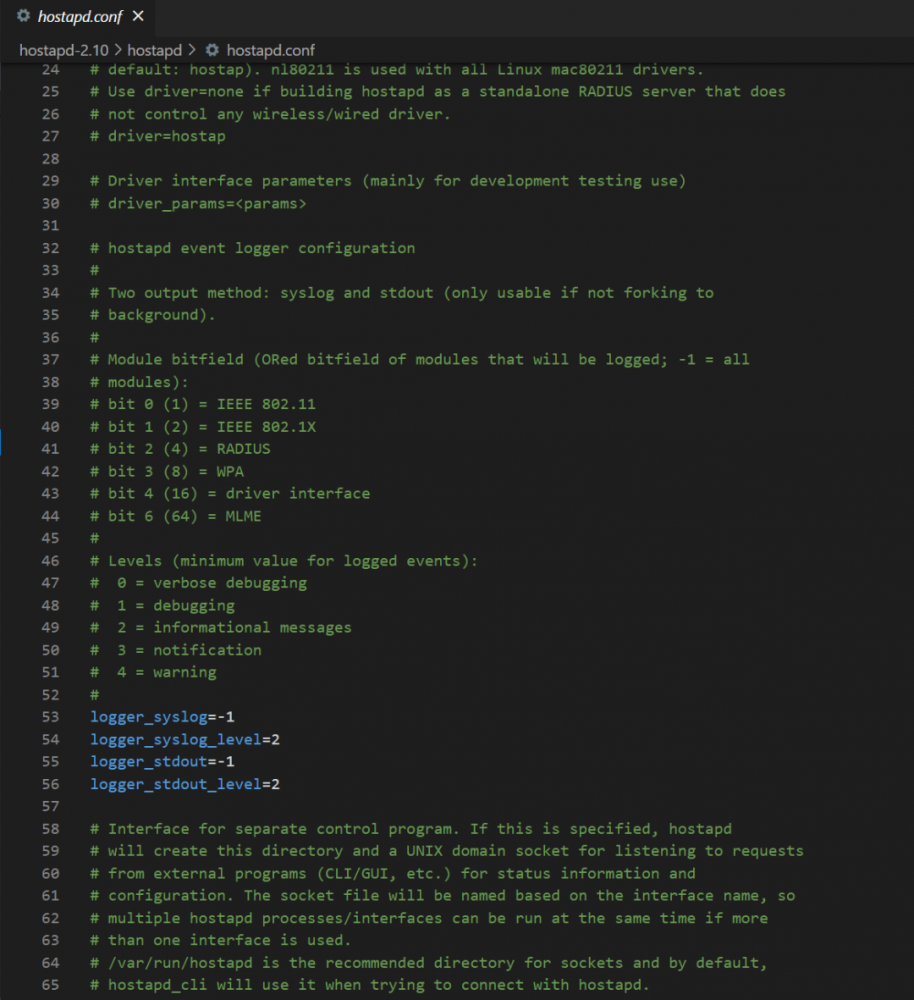
里面的内容很多,实际中我们可能用不到那么多配置,我们可以删减、修改,只保留我们所需的配置。
我们删减修改之后得到:
# AP netdevice name interface=wlan0 # SSID to be used in IEEE 802.11 management frames ssid=LinuxZn_AP # Driver interface type (hostap/wired/none/nl80211/bsd); # default: hostap). nl80211 is used with all Linux mac80211 drivers. # Use driver=none if building hostapd as a standalone RADIUS server that does # not control any wireless/wired driver. driver=nl80211 # Interface for separate control program. # /var/run/hostapd is the recommended directory for sockets and by default, # hostapd_cli will use it when trying to connect with hostapd. ctrl_interface=/var/run/hostapd # Channel number (IEEE 802.11) channel=5 # ieee80211n: Whether IEEE 802.11n (HT) is enabled # 0 = disabled (default) # 1 = enabled # Note: You will also need to enable WMM for full HT functionality. # Note: hw_mode=g (2.4 GHz) and hw_mode=a (5 GHz) is used to specify the band. ieee80211n=1 hw_mode=g # Send empty SSID in beacons and ignore probe request frames that do not # specify full SSID, i.e., require stations to know SSID. # default: disabled (0) # 1 = send empty (length=0) SSID in beacon and ignore probe request for # broadcast SSID # 2 = clear SSID (ASCII 0), but keep the original length (this may be required # with some clients that do not support empty SSID) and ignore probe # requests for broadcast SSID ignore_broadcast_ssid=0 # WPA/IEEE 802.11i configuration wpa=2 wpa_passphrase=12345678 wpa_key_mgmt=WPA-PSK rsn_pairwise=CCMP
该文件主要配置了:
- 所用网卡:wlan0
- AP名称:LinuxZn_AP
- AP密码:12345678
- 加密:WPA2
- 频段:2.4GHz
我们把hostapd.conf配置文件我们放到板子上的/etc目录下备用:
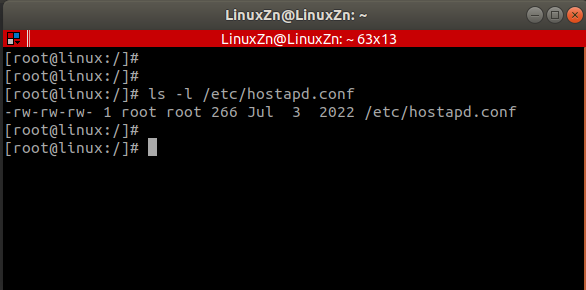
udhcpd的配置文件可参考udhcpd源码下的udhcpd.conf:
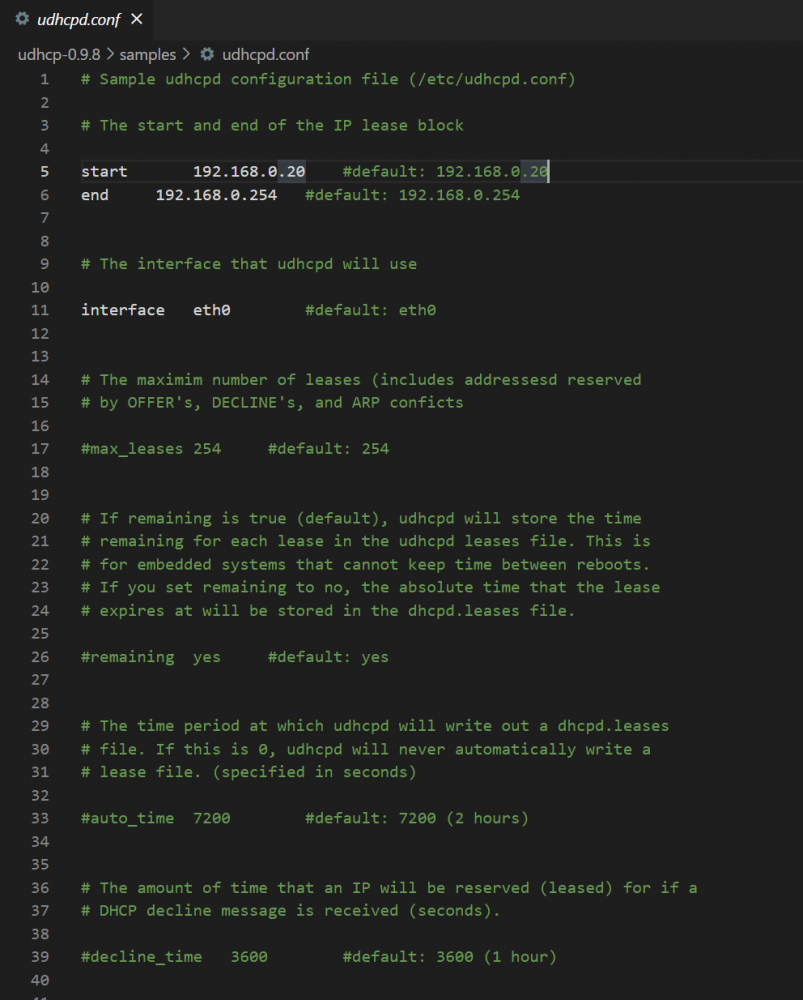
同样的,我们只保留如下内容:
# The start and end of the IP lease block start 192.168.3.2 end 192.168.3.254 # The interface that udhcpd will use interface wlan0 opt dns 114.114.114.114 option subnet 255.255.255.0 opt router 192.168.3.1 option domain local option lease 864000 # 10 days of seconds
该文件主要配置了:
- 所能分配的IP地址的范围为:192.168.3.2~192.168.3.254
- 网卡接口:wlan0
- 网关地址:192.168.3.1
我们把udhcpd.conf配置文件放到板子上的/etc目录下备用:
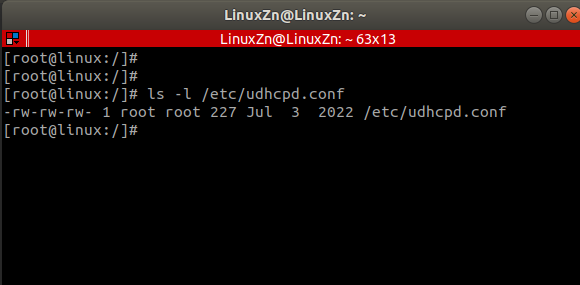
有了以上工具及相关配置文件之后,还需要进行一些操作,才可以开启我们的热点,我们把这些操作写成脚本:
start_ap.sh:
#!/bin/bash # 杀掉网卡操作相关的进程 killall wpa_supplicant udhcpc dhcpcd dnsmasq udhcpd hostapd > /dev/null 2>&1 # 禁用网卡 ifconfig wlan0 down # 启用网卡 ifconfig wlan0 up # 给无线网卡设置IP地址(网关地址) ifconfig wlan0 192.168.3.1 # 启动DHCP udhcpd /etc/udhcpd.conf # 启动热点 hostapd /etc/hostapd.conf -B
开启热点:
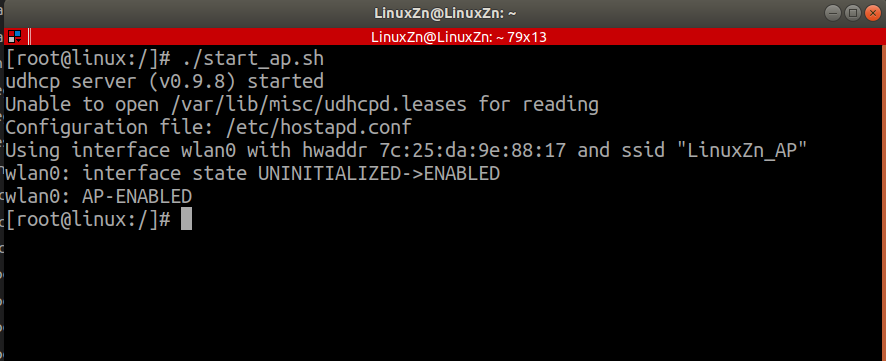
连接测试:
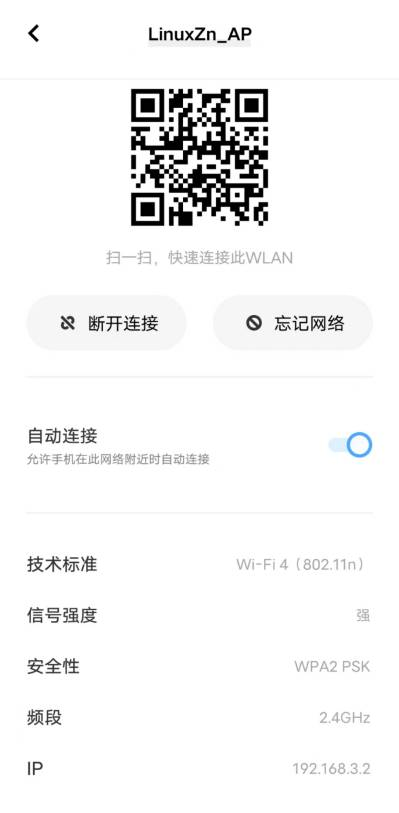
可见,手机分配到的IP为192.168.3.2,属于192.168.3.2~192.168.3.254的范围,我们的设备热点开启成功!我们的PC可以连接这个热点对设备进行调试。
以上就是本次的分享,如果觉得文章有帮助,麻烦帮忙转发,谢谢!
转载自网络,如有侵权,联系删除。

 我要赚赏金
我要赚赏金

